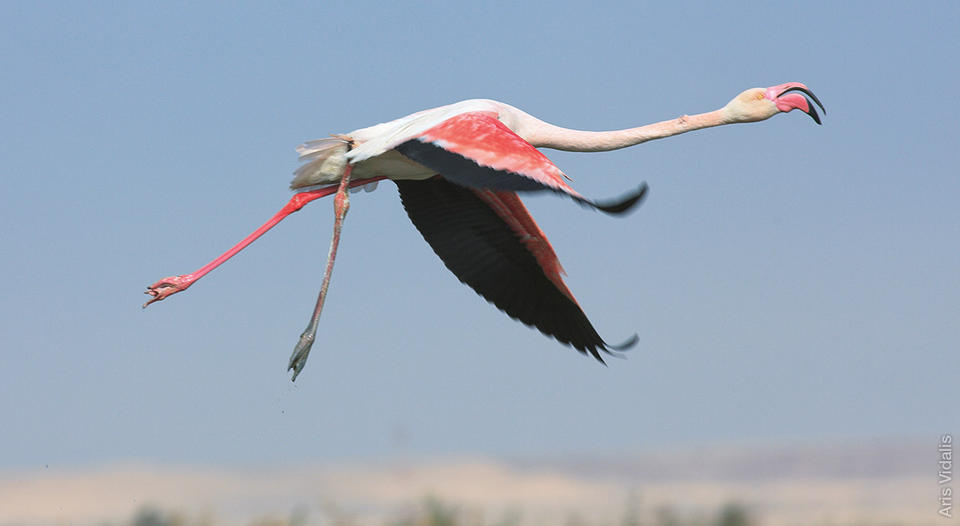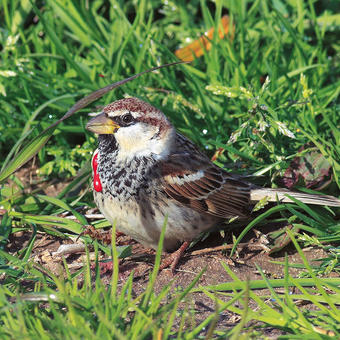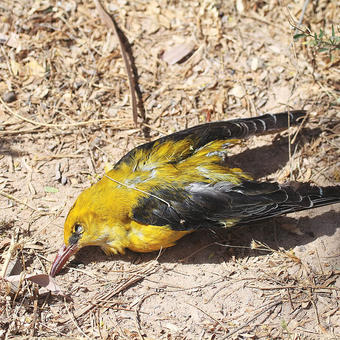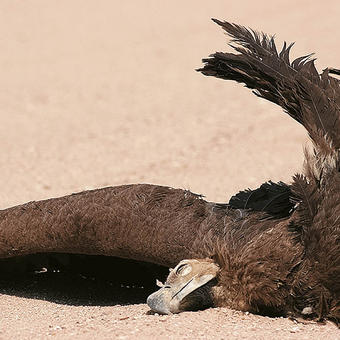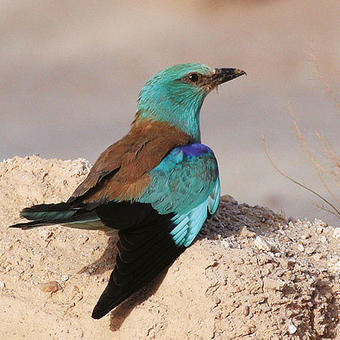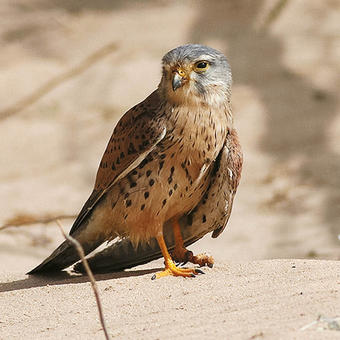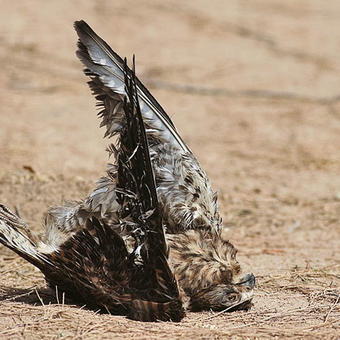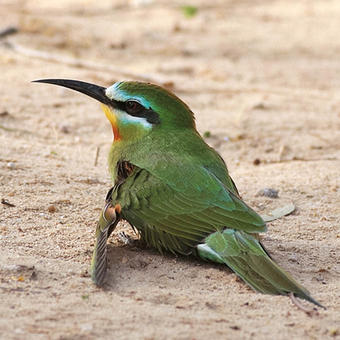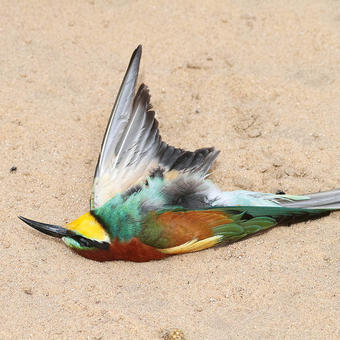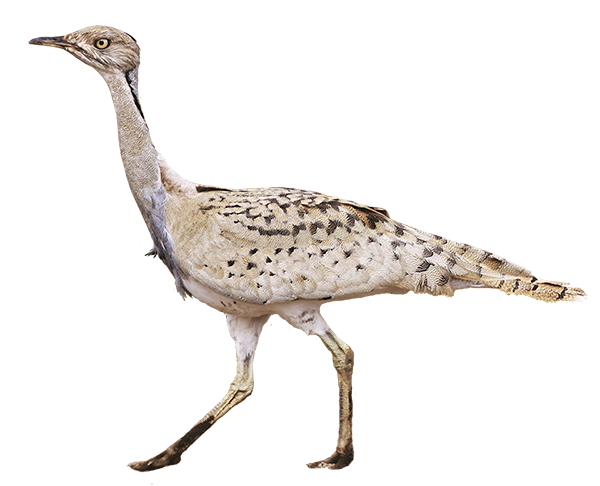
Shot to extinction?
In Kuwait birds are often shot and killed for target practice, for trophies or as delicacies. This is inherently wrong and especially damaging to populations during spring migration. In spring, birds are flying to their breeding grounds. The birds that have survived this far into their travels deserve to continue on during this critical time in their life cycle. Shooting also disturbs and displaces bird populations and disrupts staging and roosting sites. Indiscriminate shooting and poaching are currently a severe problem in Kuwait, even within certain protected areas. Shooting and persecution by humans is one reason many birds are so rare. Shooting is responsible for the local extinction of certain birds. This concerns some emblematic species such as the Arabian Ostrich which tumbled to extinction only a few decades ago. Other birds such as the bustards and sandgrouse have also tragically declined – will they be the next to go extinct?
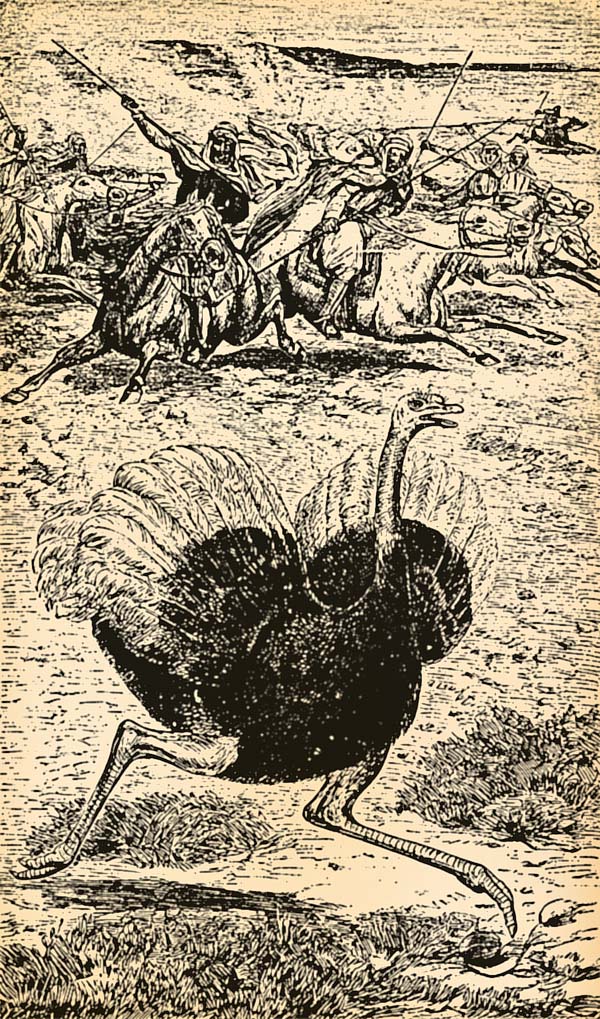
19th century artist’s impression depicting ostrich hunters (engraving by G. Pearson, 1877). It was the use of fast off-road vehicles and guns that actually brought the species to extinction in the Arabian Peninsula in the mid 20th century.
There is little doubt that shooting (often called hunting) and other forms of illegal persecution are important contributory causes for the decline of many bird species’ populations both in Kuwait and the wider Middle East. Therefore we make the following recommendations:
- More conservation-relevant ornithological research is needed. Kuwait should create an assessment of threatened species at the local state level. This concerns the creation of a local scientific Red List similar to the IUCN global threatened species designations; most countries have such a list already. This local assessment will help support the implementation of a national biodiversity strategy.
- Existing species protection and shooting laws need to be reformed, strengthened and enforced.
- Hunting must be monitored. Tighter controls must be implemented until sustainable use of the resource is assured. A “precautionary principle” approach should be applied to regulate the legally hunted species and species-management plans must be developed.
- The disturbance hunting/shooting causes must be better assessed. Shooting or poaching not only causes the death of individual birds it also creates important disturbance pressures that displace bird populations. This kind of disturbance can do much damage to small populations of wintering, migrating or breeding birds that have specialized needs and require specific habitat areas (i.e. small freshwater wetlands).
- Organized law enforcement, such as anti-poaching campaigns and education, is critical in order to stem criminal poaching. Combating poaching is difficult in societies where shooting migrant birds for “target practice” is traditionally tolerated. Hunting and conservation can co-exist if the dynamics of nature’s bounty is appreciated and respected. Someone who shoots illegally must not be considered a hunter. Criminal shooting disgraces hunting!
- An alternative to shooting and hunting is natural history recreation such as birding and nature photography. These activities, if better promoted, will enhance society’s appreciation for threatened and protected bird species.


